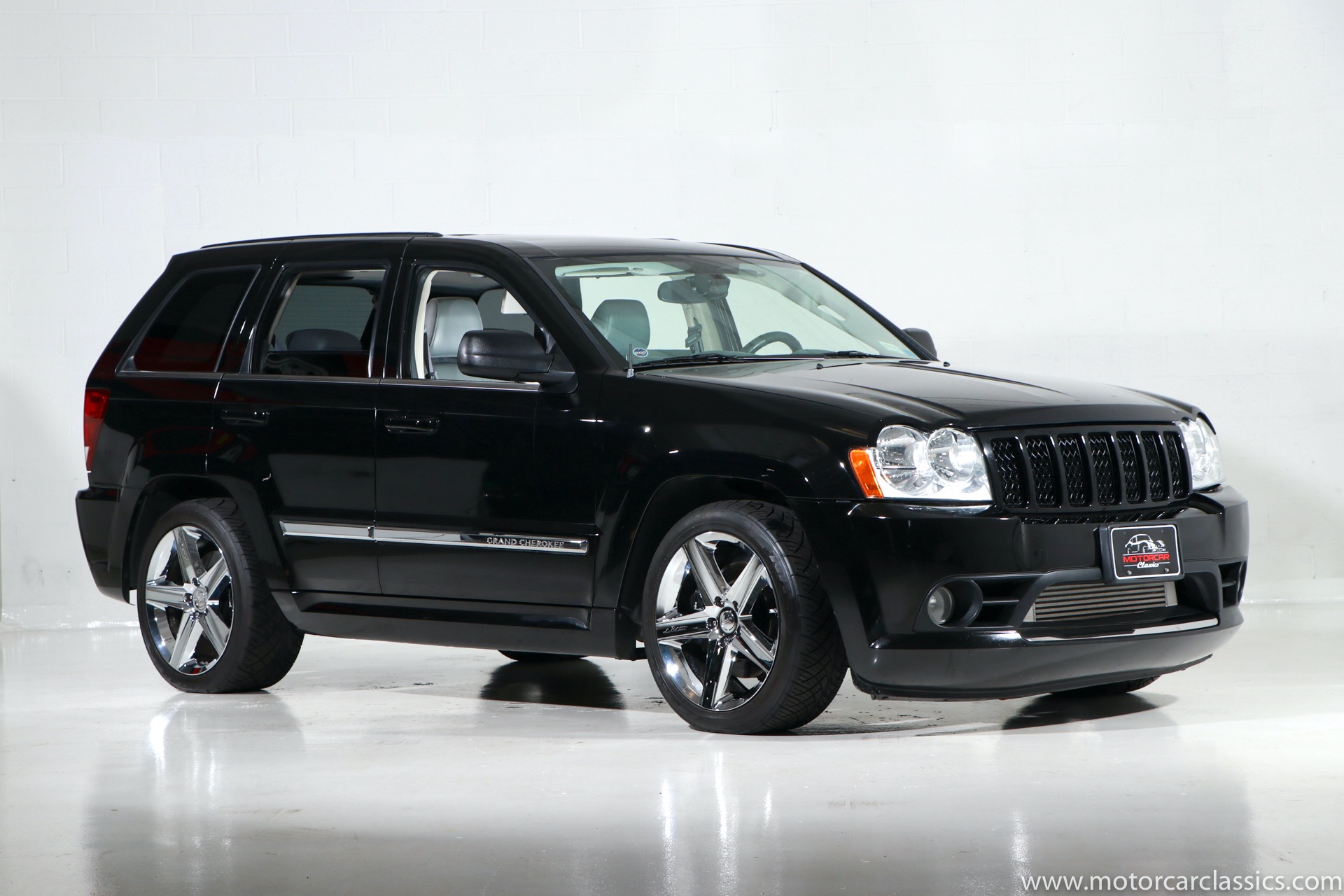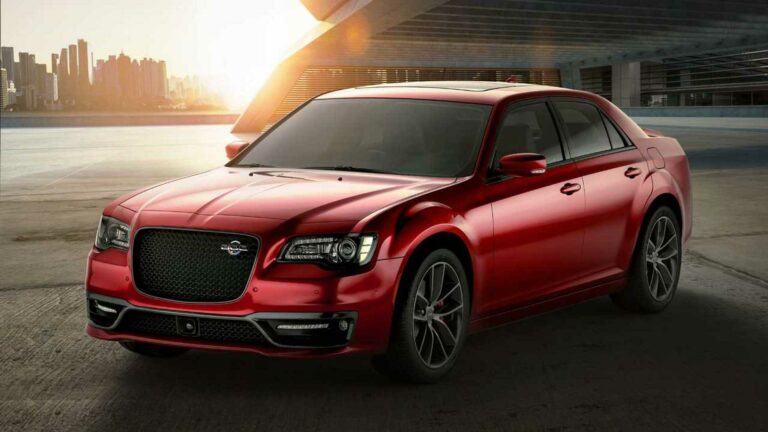Jeep Grand Cherokee SRT8: The High-Performance SUV That Defined a Segment
Jeep Grand Cherokee SRT8: The High-Performance SUV That Defined a Segment jeeps.truckstrend.com
An Engaging Introduction
In the realm of sport utility vehicles, the term "performance" often conjures images of nimble crossovers or off-road conquerors. Yet, for nearly two decades, one vehicle has stood apart, brazenly defying categorization: the Jeep Grand Cherokee SRT8. Born from the audacious minds at Street & Racing Technology (SRT), Chrysler’s in-house performance division, the SRT8 Grand Cherokee wasn’t just a fast SUV; it was a paradigm shift. It blended the quintessential American utility of a Jeep with the heart-pounding ferocity of a muscle car, creating a segment that few dared to enter, let alone dominate. More than just a vehicle, the SRT8 is a statement – a testament to the idea that practicality doesn’t have to sacrifice exhilaration. It’s a family hauler that can outrun many sports cars, a comfortable cruiser with a growl that demands attention, and a true icon in the world of high-performance SUVs.
Jeep Grand Cherokee SRT8: The High-Performance SUV That Defined a Segment
The Genesis of a Beast: What is the Jeep Grand Cherokee SRT8?
At its core, the Jeep Grand Cherokee SRT8 is a Grand Cherokee that has been radically re-engineered for pure performance. The "SRT" in its name stands for "Street & Racing Technology," a division of Stellantis (formerly Chrysler/FCA) dedicated to creating high-performance versions of their mainstream vehicles. The "8" signifies the number of cylinders in its monstrous engine.
When the first Grand Cherokee SRT8 debuted for the 2006 model year, it was revolutionary. Until then, performance SUVs were largely European offerings like the Porsche Cayenne or BMW X5. Jeep shattered that mold by offering American muscle, utility, and undeniable swagger in one potent package. The mission was clear: take a capable SUV platform and infuse it with supercar-level acceleration, track-worthy handling, and intimidating presence, all while retaining a semblance of everyday usability. This involved far more than just dropping a big engine under the hood; it required comprehensive upgrades to the drivetrain, suspension, braking system, and even aerodynamic enhancements to manage the immense power. The result was an SUV that could surprise unsuspecting sports car drivers at a stoplight and still comfortably carry groceries or tow a trailer.
Generations of Power: Evolution of the SRT8
The Jeep Grand Cherokee SRT8 has evolved through two distinct generations, each pushing the boundaries of what a performance SUV could be.
WK Generation (2006-2010)
The original Grand Cherokee SRT8, built on the WK platform, was an instant legend.
- Engine: It was powered by a naturally aspirated 6.1-liter HEMI V8 engine, producing a formidable 420 horsepower and 420 lb-ft of torque. This engine, a beefed-up version of the standard HEMI, was specifically tuned for high-revving performance.
- Performance: Mated to a robust five-speed automatic transmission and a full-time Quadra-Trac on-demand four-wheel-drive system, the WK SRT8 could sprint from 0-60 mph in a blistering 4.6 seconds and complete the quarter-mile in the low 13-second range.
- Chassis & Brakes: To handle this power, Jeep equipped it with a performance-tuned suspension featuring stiffer springs, larger anti-roll bars, and Bilstein shock absorbers. Massive Brembo brakes (14.2-inch front, 13.8-inch rear) provided incredible stopping power.
- Exterior & Interior: Visually, the WK SRT8 stood out with a unique front fascia, body-colored cladding, 20-inch forged aluminum wheels, and a dual-exhaust system. Inside, performance seats, carbon fiber accents, and a specific gauge cluster reinforced its sporty character. It was raw, aggressive, and unapologetically American.

WK2 Generation (2012-2021)
After a brief hiatus, the SRT-badged Grand Cherokee returned for the 2012 model year, now built on the more refined WK2 platform. While the "8" was dropped from the official badging, it remained the spiritual successor to the SRT8.
- Engine: The WK2 SRT (as it was officially known) received an even larger and more powerful 6.4-liter (392 cubic inch) HEMI V8. This engine initially produced 470 horsepower and 465 lb-ft of torque, later increasing to 475 horsepower and 470 lb-ft.
- Performance: Paired with an eight-speed automatic transmission (replacing the older five-speed) and an enhanced Quadra-Trac Active On-Demand 4WD system, the WK2 SRT could hit 60 mph in a staggering 4.4 seconds and conquer the quarter-mile in the mid-12-second range. The addition of launch control further optimized acceleration.
- Chassis & Brakes: The WK2 featured a more sophisticated adaptive damping suspension system, allowing drivers to select different modes (Auto, Sport, Track, Tow, Snow) to alter suspension stiffness, transmission shift points, and throttle response. Brembo brakes remained standard, with even larger rotors (15-inch front, 13.8-inch rear).
- Exterior & Interior: The WK2 SRT boasted a more streamlined yet aggressive design, with a unique front grille, LED daytime running lights, a functional hood scoop, and signature twin exhaust tips. The interior was significantly upgraded, offering higher-quality materials, advanced infotainment systems (Uconnect), and more comfortable performance-oriented seating, bridging the gap between raw power and luxurious refinement. This generation truly solidified the SRT Grand Cherokee’s position as a premium performance SUV, paving the way for the even more extreme Trackhawk.

Performance and Handling: More Than Just Straight-Line Speed
While the raw power of the HEMI V8 engines is undoubtedly the SRT8’s defining characteristic, its performance prowess extends far beyond straight-line acceleration.
- The HEMI Roar: Both the 6.1L and 6.4L HEMI V8s are masterpieces of American engineering. They deliver immediate, visceral torque and an unmistakable exhaust note that rumbles at idle and roars under wide-open throttle. This engine sound is a key part of the SRT8 experience, providing an auditory backdrop to its impressive speed.
- AWD System: The Quadra-Trac system is crucial. It’s a full-time, active on-demand four-wheel-drive system that intelligently distributes torque to the wheels with the most grip, ensuring maximum traction during hard acceleration and cornering. In Track mode, the system biases torque to the rear wheels for a more dynamic, rear-wheel-drive-like feel.
- Adaptive Suspension: The WK2’s adaptive damping suspension, particularly, transforms the vehicle’s character. In "Auto" mode, it provides a surprisingly comfortable ride for daily driving, soaking up bumps with ease. Switch to "Sport" or "Track" mode, and the dampers stiffen, reducing body roll and sharpening handling response, allowing the large SUV to corner with remarkable composure and precision.
- Brembo Braking Power: Given its weight and speed, exceptional braking is non-negotiable. The massive Brembo calipers and rotors on both generations provide fade-resistant stopping power that inspires confidence, whether on the street or a track.
- Steering Feel: While not as communicative as a dedicated sports car, the SRT8’s steering is well-weighted and direct, offering enough feedback to confidently pilot the vehicle at speed.
- Driving Modes (WK2): The Selec-Track system in the WK2 generation allows drivers to customize the vehicle’s dynamics for various conditions, optimizing everything from throttle mapping and transmission shifts to suspension stiffness and AWD torque distribution. This versatility makes the SRT8 surprisingly adaptable to different driving scenarios.
Living with an SRT8: Practicality and Ownership Considerations
The Grand Cherokee SRT8 offers a unique blend of attributes, but prospective owners should be aware of both its benefits and challenges.
Benefits:
- Versatility: It’s an SUV, after all. With ample cargo space, comfortable seating for five, and respectable towing capacity (up to 7,200 lbs for the WK2), the SRT8 can handle family duties, trips to the hardware store, or even pull a small boat with ease.
- Performance Thrills: Few vehicles offer such explosive acceleration and confident handling in a practical package. It’s a genuinely exciting vehicle to drive, whether merging onto a highway or tackling a winding road.
- Exclusivity & Presence: The SRT8 is a head-turner. Its aggressive styling and distinctive exhaust note ensure it stands out from the crowd, conveying a sense of power and exclusivity.
- Comfort: Despite its performance capabilities, the Grand Cherokee SRT8 remains a comfortable vehicle for long journeys, with supportive seats and a well-appointed cabin, especially in the WK2 generation.
Challenges & Considerations:
- Fuel Economy: This is perhaps the biggest elephant in the room. The HEMI V8s are thirsty, with real-world combined fuel economy often hovering around 10-15 MPG, depending on driving style. Premium fuel is typically recommended or required.
- Maintenance Costs: Performance vehicles come with performance part prices. Tires are large, wide, and expensive (especially performance summer tires). Brembo brake pads and rotors are significantly pricier than standard components. Regular servicing, including specialized fluids, can also be more costly.
- Insurance Premiums: Due to its high performance and replacement value, insurance for an SRT8 can be considerably higher than for a standard Grand Cherokee.
- Depreciation (Original): Like most high-performance vehicles, the SRT8 initially experienced significant depreciation from its original MSRP. However, as a niche vehicle, well-maintained examples are beginning to hold their value or even appreciate in some cases in the used market.
- Finding a Good Used Example: Many SRT8s were driven hard. Finding a well-cared-for example with a complete service history can be a challenge.
Buying and Maintaining a Used Grand Cherokee SRT8: Tips for Prospective Owners
Acquiring a used Grand Cherokee SRT8 requires diligence, but the rewards can be immense for the savvy buyer.
What to Look For When Buying:
- Service History: This is paramount. Look for a comprehensive service record, especially for oil changes (using recommended high-performance synthetic oil), transmission fluid changes, and differential services. Neglected maintenance is a red flag.
- Signs of Abuse: Inspect for evidence of track use or street racing, such as excessive tire wear (especially uneven), bent wheels, signs of curb rash, or aftermarket modifications that might compromise reliability (e.g., poorly installed superchargers).
- Engine & Transmission: Listen for unusual noises (knocks, ticks, whining). Check for oil leaks. Ensure the transmission shifts smoothly without hesitation or harshness.
- Suspension: Test drive on varying surfaces. Listen for clunks or squeaks from the suspension. Check for worn bushings, leaky shocks, or uneven ride height (though adaptive dampers can mask some issues).
- Brakes: Inspect rotors for warping or deep grooves. Check pad thickness. A soft brake pedal could indicate air in the lines or a master cylinder issue.
- Tires: Ensure the vehicle is fitted with appropriate performance tires, and check their condition and wear patterns. Proper tires are crucial for handling and safety.
- Electrical Issues: Test all electronic features, including the infotainment system, power windows, seats, and climate control. Check for any persistent warning lights on the dash.
- Rust: Inspect the undercarriage, wheel wells, and common rust spots, especially if the vehicle comes from a region with harsh winters.
- Recall Status: Check if all applicable recalls have been addressed.
Essential Maintenance Tips for Owners:
- Regular Oil Changes: Adhere strictly to the manufacturer’s recommended oil change intervals, using only the specified synthetic oil. The HEMI V8s are sensitive to oil quality and level.
- Brake System Care: Regularly inspect brake pads and rotors. Be prepared for their replacement costs. Consider flushing the brake fluid periodically, especially if driving aggressively.
- Tire Management: Rotate tires regularly (if non-directional) and maintain proper inflation. Invest in high-quality performance tires – they significantly impact handling and safety.
- Cooling System: Ensure the cooling system is in top condition, as performance engines generate a lot of heat. Check coolant levels and condition.
- Differential & Transfer Case Fluids: These components work hard and require periodic fluid changes with specific lubricants.
- Spark Plugs: Follow the recommended replacement schedule for spark plugs.
- Don’t Skimp on Parts: When replacing components, especially performance-related ones, always opt for OEM or high-quality aftermarket parts. Cutting corners can lead to premature failure or compromised performance.
- Professional Inspections: Even if you’re handy, regular inspections by a mechanic familiar with SRT vehicles are advisable.
Price Table: Jeep Grand Cherokee SRT8
Given that the Jeep Grand Cherokee SRT8 (and its SRT successor) is no longer sold new, the pricing reflects its original MSRP and current used market values. Prices are highly variable based on condition, mileage, optional extras, and geographical location.
| Generation | Model Years | Original MSRP (Approx.) | Current Used Market Value (Approx. 2024) | Key Engine |
|---|---|---|---|---|
| WK | 2006-2010 | $39,995 – $45,000+ | $10,000 – $25,000+ | 6.1L HEMI V8 |
| WK2 | 2012-2021 | $59,995 – $75,000+ | $25,000 – $60,000+ | 6.4L HEMI V8 |
Note: The WK2 generation was officially branded as "Grand Cherokee SRT" from 2012 onwards, but it is the direct successor in spirit and performance to the original SRT8.
Disclaimer: The "Current Used Market Value" is an estimate and can fluctuate significantly based on vehicle condition, mileage, maintenance history, specific trim/options, modifications, and regional market demand. Prices can be lower for high-mileage or neglected examples, and higher for pristine, low-mileage collector-grade vehicles.
Frequently Asked Questions (FAQ) about the Jeep Grand Cherokee SRT8
Q1: What does SRT8 stand for?
A1: SRT stands for "Street & Racing Technology," which was Chrysler’s in-house performance division. The "8" signifies the number of cylinders in its V8 engine.
Q2: Is the Jeep Grand Cherokee SRT8 a good daily driver?
A2: Yes, it can be a surprisingly good daily driver due to its comfortable interior, ample space, and strong towing capability. However, its extremely poor fuel economy and higher maintenance costs compared to a standard SUV are significant considerations for daily commuting.
Q3: How much does it cost to maintain a Grand Cherokee SRT8?
A3: Maintenance costs are significantly higher than a regular Grand Cherokee. Expect higher expenses for premium fuel, larger and more expensive performance tires, specialized fluids, and Brembo brake components. Regular oil changes with synthetic oil are also crucial.
Q4: What’s the main difference between the Grand Cherokee SRT and the Trackhawk?
A4: The primary difference is the engine. The Grand Cherokee SRT (WK2 generation, successor to SRT8) uses a naturally aspirated 6.4L HEMI V8 (475 hp). The Trackhawk, introduced later, features a supercharged 6.2L HEMI V8 (707 hp), making it significantly more powerful, faster, and more expensive.
Q5: Can I tow with a Grand Cherokee SRT8?
A5: Yes, despite its performance focus, the Grand Cherokee SRT8 retains impressive towing capabilities. The WK2 generation, for example, can tow up to 7,200 lbs (with proper equipment), making it a versatile performance vehicle.
Q6: What kind of fuel economy can I expect from an SRT8?
A6: Fuel economy is notoriously low. Expect real-world combined averages to be in the range of 10-15 miles per gallon (MPG), depending heavily on driving style and conditions. Premium unleaded fuel is typically recommended or required.
Q7: Is the Grand Cherokee SRT8 reliable?
A7: Generally, the HEMI V8 engines are known for their robustness. However, like any high-performance vehicle, reliability can be impacted by how it was driven and maintained. Neglected maintenance or extensive aftermarket modifications can lead to issues. Regular, diligent maintenance is key to long-term reliability.
Concluding Summary
The Jeep Grand Cherokee SRT8 is more than just a fast SUV; it’s a genre-bending machine that carved out its own niche in the automotive world. From the raw, groundbreaking power of the WK generation to the refined yet ferocious performance of the WK2 SRT, it consistently delivered muscle car thrills in a family-friendly package. While ownership comes with the considerations of higher fuel and maintenance costs, the unparalleled blend of utility, comfort, and sheer performance makes the SRT8 an incredibly compelling proposition. For those who crave an SUV that stands apart, an vehicle that can haul people and cargo with exhilarating speed, and a future classic in the making, the Jeep Grand Cherokee SRT8 remains an iconic and highly desirable choice. It truly is a beast with a purpose, and a testament to American performance engineering.





